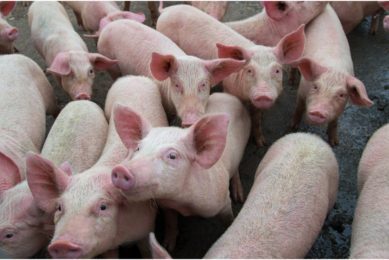Human antibiotic resistance studied in pigs
Pigs could be the key to understanding how antibiotic resistant bacteria persist in Intensive Care Units in hospitals.
Dr Chin told the 2007 Australian Society for Microbiology’s annual conference in Adelaide in July that: “The current theory of antibiotic resistance is that the ‘fittest’ bacteria, that is, those carrying genes for resistance, are the most likely to survive. “Because antibiotic treatment will never kill all bacteria, bad or good, there will always be a pool of antibiotic resistance bacteria that can potentially transfer resistance to incoming pathogens. “It is important to identify the antimicrobial resistant gene pool in entire microbial communities before antibiotic treatment.
Pig model
Using pigs as a model, Dr Chin and Dr Toni Chapman at NSW Department of Primary Industries Elizabeth Macarthur Agricultural Institute (Australia) have examined how E. coli bacteria — a common cause of diarrhoea in pigs and humans — respond to treatment by antibiotics. “Our research shows clearly that use of one antibiotic to treat E. coli not only increases resistance against that antibiotic but also increases the carriage of resistance genes against other classes of antibiotics.
Detection method
Dr Chin said for this reason it is important to develop a molecular detection method that can identify antibiotic resistance signatures of entire microbial communities. “Our hope is that this kind of information will equip clinicians to better manage prescribing of antibiotics.”
Pig model
Using pigs as a model, Dr Chin and Dr Toni Chapman at NSW Department of Primary Industries Elizabeth Macarthur Agricultural Institute (Australia) have examined how E. coli bacteria — a common cause of diarrhoea in pigs and humans — respond to treatment by antibiotics. “Our research shows clearly that use of one antibiotic to treat E. coli not only increases resistance against that antibiotic but also increases the carriage of resistance genes against other classes of antibiotics.
Detection method
Dr Chin said for this reason it is important to develop a molecular detection method that can identify antibiotic resistance signatures of entire microbial communities. “Our hope is that this kind of information will equip clinicians to better manage prescribing of antibiotics.”











